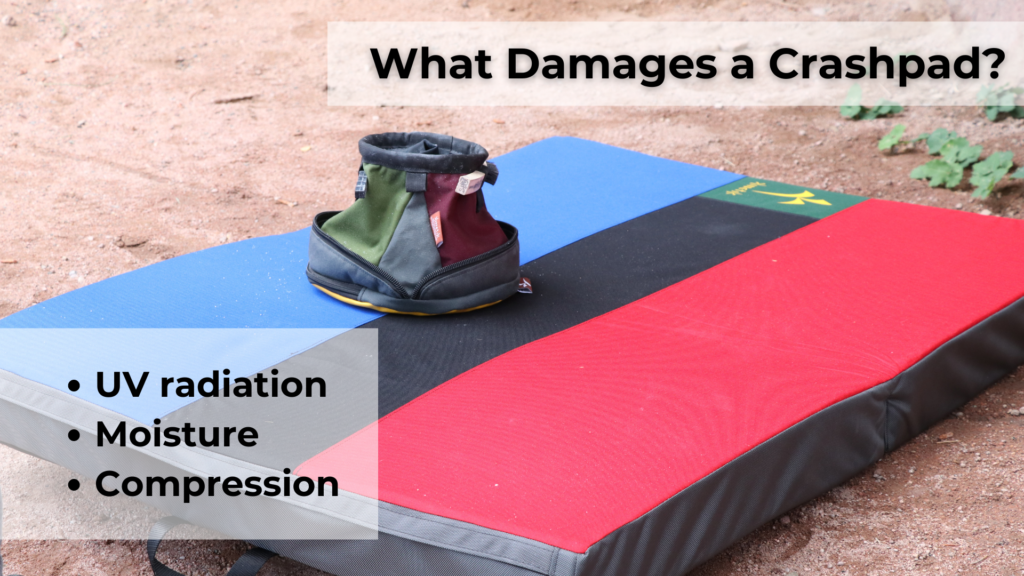
Climbing crash pads are essential gear for boulderers, providing the necessary protection for falls and reducing the risk of injury. To ensure your crash pad remains effective and lasts for many years, regular maintenance is crucial. This guide will cover all aspects of crash pad maintenance, including cleaning, storage, drying, repairs, proper usage to prevent wear, and understanding the lifespan of a crash pad.
Cleaning Your Crash Pad
Routine Cleaning
Regularly cleaning your crash pad helps maintain its longevity and performance. Begin by shaking off dirt and debris after each use. Use a brush to remove any stubborn dirt from the fabric surface.
Deep Cleaning
For a more thorough clean, remove the foam from inside the pad and gently scrub the surface with a soft brush or sponge, then rinse with a hose. Avoid using harsh chemicals or machine washing, as these can damage the fabric and foam. After cleaning, let the pad air dry completely before storing it.
Proper Storage
Indoor Storage
Store your crash pad indoors, away from direct sunlight and moisture. Exposure to UV rays can degrade the fabric and foam, while damp conditions can lead to mold and mildew growth.
Storing Flat vs. Folded
If space allows, store your crash pad flat to maintain the integrity of the foam. If you need to fold it, ensure it’s in a dry area and avoid placing heavy objects on top to prevent permanent creases.
Drying Your Crash Pad
After Cleaning or Rain
If your crash pad gets wet, whether from cleaning or rain, it’s crucial to dry it thoroughly to prevent mold and mildew. Open the pad fully and place it in a well-ventilated area out of direct sunlight. If possible, prop it up to allow air to circulate on both sides.
Avoiding Heat Sources
Do not use heat sources like dryers or heaters to speed up the drying process, as excessive heat can damage the foam and fabric.

Repairs and Maintenance
Patching Holes and Tears
Inspect your crash pad regularly for any holes or tears in the fabric. Use a strong adhesive patch kit designed for outdoor gear to fix small holes. For larger tears, consider sewing them with heavy-duty thread and then applying a patch for extra reinforcement.
Fixing Straps and Buckles
Check the straps and buckles for signs of wear. Replace any damaged buckles and sew or reinforce any frayed straps to ensure your crash pad can be securely fastened during transport and use. If your straps do wear out, we offer replacement shoulder straps and waist belts.
Proper Crash Pad Use to Prevent Wear
Optimal Placement
Place your crash pad on flat, even surfaces to avoid unnecessary stress on the foam and fabric. Avoid rocky or sharp areas that can puncture or tear the pad.
Using Multiple Pads
Using multiple crash pads or slider pads in high-impact areas can significantly distribute the force of falls more evenly, reducing the wear on each individual pad.
Lifespan of a Crash Pad
Understanding Usage Impact
The lifespan of a crash pad largely depends on its frequency of use and how well it is maintained. Regular users may need to replace their pads more often than occasional climbers.
Signs of Replacement
Look for signs such as thinning foam, significant tears, or diminished cushioning effect. When the pad no longer provides adequate protection, it’s time to invest in a new one.
Extending Lifespan
Proper maintenance, including regular cleaning, correct storage, timely repairs, and mindful usage, can significantly extend the lifespan of your crash pad. Using products such as the ZeptoNewton or AttoNewton can reduce the overall wear and tear on your standard crash pads.
By following these guidelines for crash pad maintenance, you can ensure your pad remains in excellent condition, providing reliable protection for your bouldering adventures for many years to come. Happy climbing!



